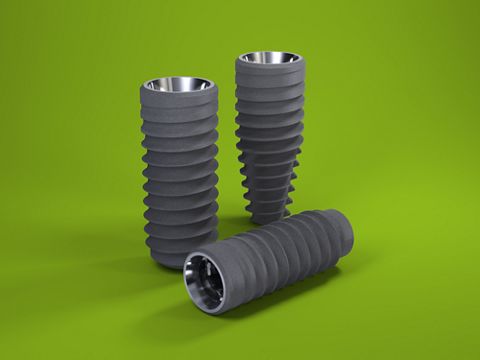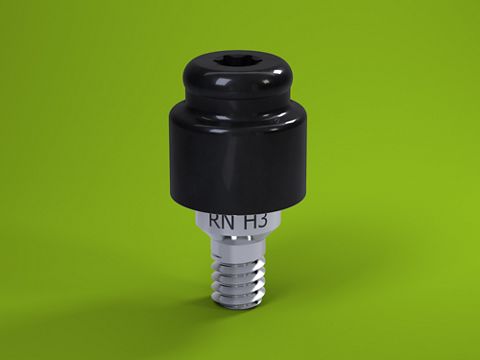Rehabilitation of an edentulous mandible
A clinical case report by Philippe Chapelot, France
In this case study, Straumann® BLT implants were successfully used to rehabilitate the patient’s mandible. The Novaloc® system proved to be highly retentive and comfortable for the patient, who referred to it several times as the treatment that changed his life.
Initial situation
The patient, a 70-year-old man, was referred to our practice as his lower removable prosthesis was very mobile and he was no longer able to speak or eat properly (Fig. 1). The main reason for the increased mobility and lack of re-adaptation of the prosthesis was increased bone remodeling in the lower jaw, which ultimately led to an almost non-existent bone ridge (Figs. 2-3). The patient was mainly interested in having a stabilized, easy-to-clean solution that would restore his quality of life. Radiographs and clinical examination showed enough bone to place two implants. His medical history was compatible with the indications for implant surgery. The overall esthetic requirement was not high, and the smile line was favorable.
Treatment planning
The patient was informed about the two-stage approach of the procedure. We planned to place two Straumann® Bone Level Tapered (BLT) implants in regions 33 and 43, and use the Novaloc® abutments to retain the prosthesis in place. Application of Straumann® Emdogain® to facilitate tissue healing was also envisaged. The patient agreed to the treatment plan after discussion of all possible treatment alternatives and options.
Surgical procedure
The flap was raised, and the implant bed sites were prepared according to the manufacturer’s IFU. On completion of the preparation, two Straumann® RC BLT implants were inserted using the Loxim™ holder and torque wrench, with an insertion torque of 35 Ncm (Figs. 4-6). Healing abutments were manually fitted over the implants, followed by the flap closure with 4-0 Vicryl (Fig. 7-8). In order to achieve a better and faster healing process, Straumann® Emdogain® was placed over the soft tissue and the sutured areas (Figs. 9-11). Appropriate tissue healing was observed as early as 72 hours after the surgery (Figs. 12-14). Also, the patient reported very high quality of life aspects in the form of low post-operative pain and the absence of extensive swelling. Appropriate soft tissue contours around the implant were achieved by the emergence profile parts of the healing abutments (Figs. 14-16).
Prosthetic procedure
Eight weeks later, impressions were taken in silicone putty to produce the final removable prosthesis followed by occlusal registration (Figs. 17-18). At this stage the appropriately sized Novaloc® Retentive System was chosen, and the final occlusal scheme was mounted in wax and tested in the patient’s mouth to evaluate its function (prosthesis stability and patient’s ability to speak and chew, patient’s overall comfort). After confirming that the mounted teeth fulfilled all requirements, we sent them back to the dental laboratory for finishing. One week later we received the final work with the two pre-selected Novaloc® abutments. To help the patient get used to the new rehabilitation, we decided to place the Straumann® Novaloc® green retention insert (intermediate retention) (Figs. 19-21).
Final results
At follow up, oral hygiene was good, with no signs of inflammation. The patient was extremely happy with the final outcome.



